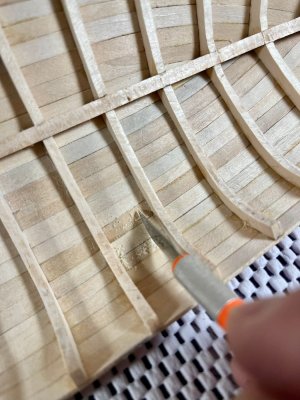- Joined
- Jun 16, 2018
- Messages
- 15
- Points
- 58

I picked up this kit for free from someone who started it but only got to the keel and bulkheads and then realized they just didn't have the time necessary to work on it. So I disassembled everything and started from the beginning.
Putting together the keel and bulkheads was fairly straightforward, no different than other ships I've seen here. The planking was challenging. I have experience steam bending hard dense woods but none with such soft ones. I didn't like it. Just a little pressure and you've dented it, luckily a bit of steam can remove any dents or such. A bit too much twist and it crumbles. Unfortunately I found that the wood supplied didn't allow for mistakes and didn't supply enough planks.

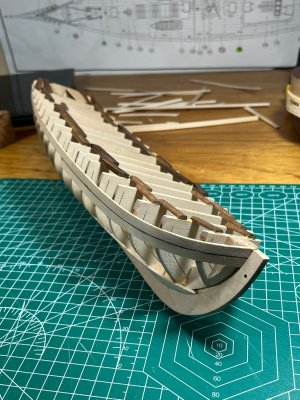
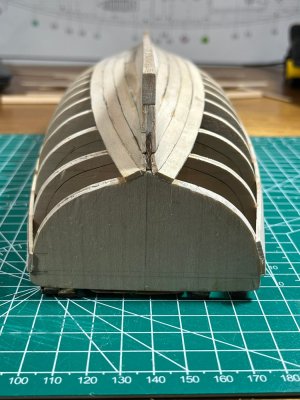
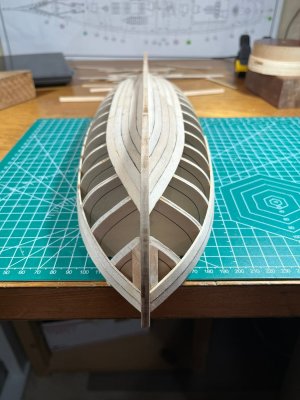
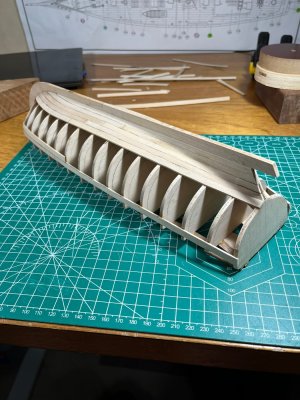
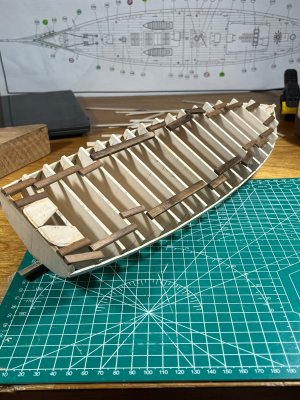
To make up for a lack of sufficient planks I took the left over sections of part-trees, hand planed them down to the correct thickness and sliced to the same plank width. I was able to get a lot of extra planks this way. The problem was after I planed down these pieces, how did I cut them accurately without wasting wood from blade thickness. So, I took a paper cutter that has a guide to hold the shuttle and blade, and that worked great with no wasted wood.
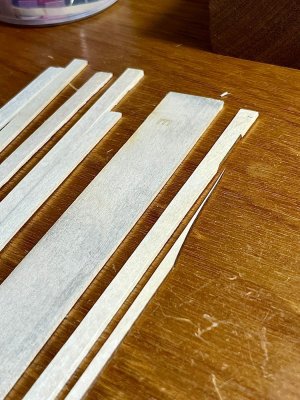
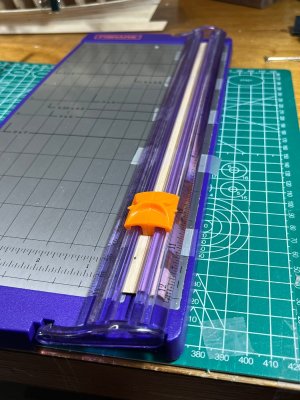
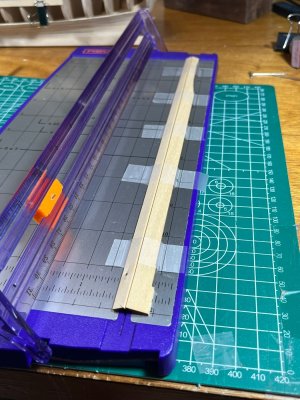
Then came the last plank, but with no more bulkhead for a spring clamp to grab onto. Then removing the bulkheads to reveal the frames.
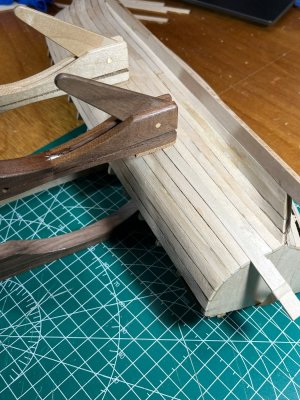
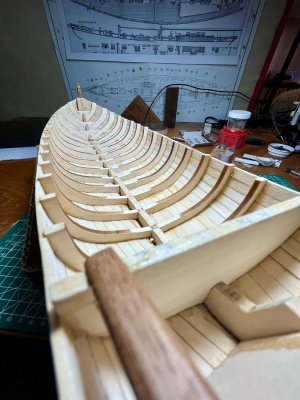

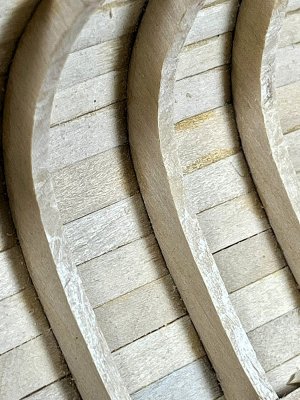
I do have a question for those with more knowledge. Should the inner side of the frames look sanded smooth or more like they were shaped by an adze.
I don't want to make this boat look like it just came off the show-room floor. But more like a boat that's been hoisted many times off and on a ship, run up on shore and hit a rock or two.
Putting together the keel and bulkheads was fairly straightforward, no different than other ships I've seen here. The planking was challenging. I have experience steam bending hard dense woods but none with such soft ones. I didn't like it. Just a little pressure and you've dented it, luckily a bit of steam can remove any dents or such. A bit too much twist and it crumbles. Unfortunately I found that the wood supplied didn't allow for mistakes and didn't supply enough planks.






To make up for a lack of sufficient planks I took the left over sections of part-trees, hand planed them down to the correct thickness and sliced to the same plank width. I was able to get a lot of extra planks this way. The problem was after I planed down these pieces, how did I cut them accurately without wasting wood from blade thickness. So, I took a paper cutter that has a guide to hold the shuttle and blade, and that worked great with no wasted wood.



Then came the last plank, but with no more bulkhead for a spring clamp to grab onto. Then removing the bulkheads to reveal the frames.




I do have a question for those with more knowledge. Should the inner side of the frames look sanded smooth or more like they were shaped by an adze.
I don't want to make this boat look like it just came off the show-room floor. But more like a boat that's been hoisted many times off and on a ship, run up on shore and hit a rock or two.




